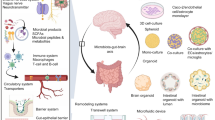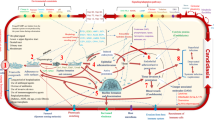Abstract
Cryptococcus neoformans is an opportunistic fungal pathogen with a propensity to infect the central nervous system of immune compromised individuals causing life-threatening meningoencephalitis. Cryptococcal biofilms have been described as a protective niche against microbial predators in nature and shown to enhance resistance against antifungal agents and specific mediators of host immune responses. Based on the potential importance of cryptococcal biofilms to its survival in the human host and in nature, these studies were designed to investigate those factors that mediate biofilm formation by C. neoformans. We observed that C. neoformans preferentially grew as planktonic cells when cultured under specific conditions designed to mimic growth within host tissues (37°C, neutral pH, and ~5% CO2) or phagocytes (37°C, acidic pH, and ~5% CO2) and as biofilms when cultured under conditions such as those encountered in the external environment (25–37°C, neutral pH, and ambient CO2). Altogether, our studies suggest that conditions similar to those observed in its natural habitat may be conducive to biofilm formation by C. neoformans.





Similar content being viewed by others
References
Mitchell TG, Perfect JR. Cryptococcosis in the era of AIDS–100 years after the discovery of Cryptococcus neoformans. Clin Microbiol Rev. 1995;8(4):515–48.
Kidd SE, Chow Y, Mak S, Bach PJ, Chen H, Hingston AO, et al. Characterization of environmental sources of the human and animal pathogen Cryptococcus gattii in British Columbia, Canada, and the Pacific Northwest of the United States. Appl Environ Microbiol. 2007;73(5):1433–43. doi:10.1128/AEM.01330-06.
Steenbergen JN, Nosanchuk JD, Malliaris SD, Casadevall A. Cryptococcus neoformans virulence is enhanced after growth in the genetically malleable host Dictyostelium discoideum. Infect Immun. 2003;71(9):4862–72. doi:10.1128/IAI.71.9.4862-4872.2003.
Steenbergen JN, Shuman HA, Casadevall A. Cryptococcus neoformans interactions with amoebae suggest an explanation for its virulence and intracellular pathogenic strategy in macrophages. Proc Natl Acad Sci USA. 2001;98(26):15245–50. doi:10.1073/pnas.261418798.
Casadevall A, Steenbergen JN, Nosanchuk JD. ‘Ready made’ virulence and ‘dual use’ virulence factors in pathogenic environmental fungi—the Cryptococcus neoformans paradigm. Curr Opin Microbiol. 2003;6(4):332–7. doi:10.1016/S1369-5274(03)00082-1.
Hall-Stoodley L, Costerton JW, Stoodley P. Bacterial biofilms: from the natural environment to infectious diseases. Nat Rev Microbiol. 2004;2(2):95–108. doi:10.1038/nrmicro821.
Joubert LM, Wolfaardt GM, Botha A. Microbial exopolymers link predator and prey in a model yeast biofilm system. Microb Ecol. 2006;52(2):187–97. doi:10.1007/s00248-006-9063-7.
Martinez LR, Casadevall A. Susceptibility of Cryptococcus neoformans biofilms to antifungal agents in vitro. Antimicrob Agents Chemother. 2006;50(3):1021–33. doi:10.1128/AAC.50.3.1021-1033.2006.
Martinez LR, Casadevall A. Cryptococcus neoformans cells in biofilms are less susceptible than planktonic cells to antimicrobial molecules produced by the innate immune system. Infect Immun. 2006;74(11):6118–23. doi:10.1128/IAI.00995-06.
Walsh TJ, Schlegel R, Moody MM, Costerton JW, Salcman M. Ventriculoatrial shunt infection due to Cryptococcus neoformans: an ultrastructural and quantitative microbiological study. Neurosurgery. 1986;18(3):373–5. doi:10.1097/00006123-198603000-00025.
Banerjee U, Gupta K, Venugopal P. A case of prosthetic valve endocarditis caused by Cryptococcus neoformans var. neoformans. J Med Vet Mycol. 1997;35(2):139–41. doi:10.1080/02681219780001031.
Braun DK, Janssen DA, Marcus JR, Kauffman CA. Cryptococcal infection of a prosthetic dialysis fistula. Am J Kidney Dis. 1994;24(5):864–7.
Penk A, Pittrow L. Role of fluconazole in the long-term suppressive therapy of fungal infections in patients with artificial implants. Mycoses. 1999;42(Suppl 2):91–6.
Martinez LR, Christaki E, Casadevall A. Specific antibody to Cryptococcus neoformans glucurunoxylomannan antagonizes antifungal drug action against cryptococcal biofilms in vitro. J Infect Dis. 2006;194(2):261–6. doi:10.1086/504722.
Martinez LR, Casadevall A. Cryptococcus neoformans biofilm formation depends on surface support and carbon source and reduces fungal cell susceptibility to heat, cold, and UV light. Appl Environ Microbiol. 2007;73(14):4592–601. doi:10.1128/AEM.02506-06.
Peeters E, Nelis HJ, Coenye T. Comparison of multiple methods for quantification of microbial biofilms grown in microtiter plates. J Microbiol Methods. 2008;72(2):157–65. doi:10.1016/j.mimet.2007.11.010.
Martinez LR, Casadevall A. Specific antibody can prevent fungal biofilm formation and this effect correlates with protective efficacy. Infect Immun. 2005;73(10):6350–62. doi:10.1128/IAI.73.10.6350-6362.2005.
Matz C, McDougald D, Moreno AM, Yung PY, Yildiz FH, Kjelleberg S. Biofilm formation and phenotypic variation enhance predation-driven persistence of Vibrio cholerae. Proc Natl Acad Sci USA. 2005;102(46):16819–24. doi:10.1073/pnas.0505350102.
Matz C, Kjelleberg S. Off the hook—how bacteria survive protozoan grazing. Trends Microbiol. 2005;13(7):302–7. doi:10.1016/j.tim.2005.05.009.
Begun J, Gaiani JM, Rohde H, Mack D, Calderwood SB, Ausubel FM, et al. Staphylococcal biofilm exopolysaccharide protects against Caenorhabditis elegans immune defenses. PLoS Pathog. 2007;3(4):e57. doi:10.1371/journal.ppat.0030057.
Mitchell AP. Fungal CO2 sensing: a breath of fresh air. Curr Biol. 2005;15(22):R934–6. doi:10.1016/j.cub.2005.10.064.
Rittershaus PC, Kechichian TB, Allegood JC, Merrill AH Jr, Hennig M, Luberto C, et al. Glucosylceramide synthase is an essential regulator of pathogenicity of Cryptococcus neoformans. J Clin Invest. 2006;116(6):1651–9. doi:10.1172/JCI27890.
Acknowledgments
We will like to thank Jose Lopez-Ribot Pharm.D., Ph.D. for critical reading of the manuscript. This work was supported by grants RO1 AI071752–03 and 5G12RR013646–09 from the National Institutes of Allergy and Infectious Diseases (NIAID) and the National Center for Research Resources (NCRR), respectively, of the National Institutes of Health (NIH). The content is solely the responsibility of the authors and does not necessarily represent the official views of the NIAID, NCRR, or the National Institutes of Health.
Author information
Authors and Affiliations
Corresponding author
Rights and permissions
About this article
Cite this article
Ravi, S., Pierce, C., Witt, C. et al. Biofilm Formation by Cryptococcus neoformans Under Distinct Environmental Conditions. Mycopathologia 167, 307–314 (2009). https://doi.org/10.1007/s11046-008-9180-6
Received:
Accepted:
Published:
Issue Date:
DOI: https://doi.org/10.1007/s11046-008-9180-6




